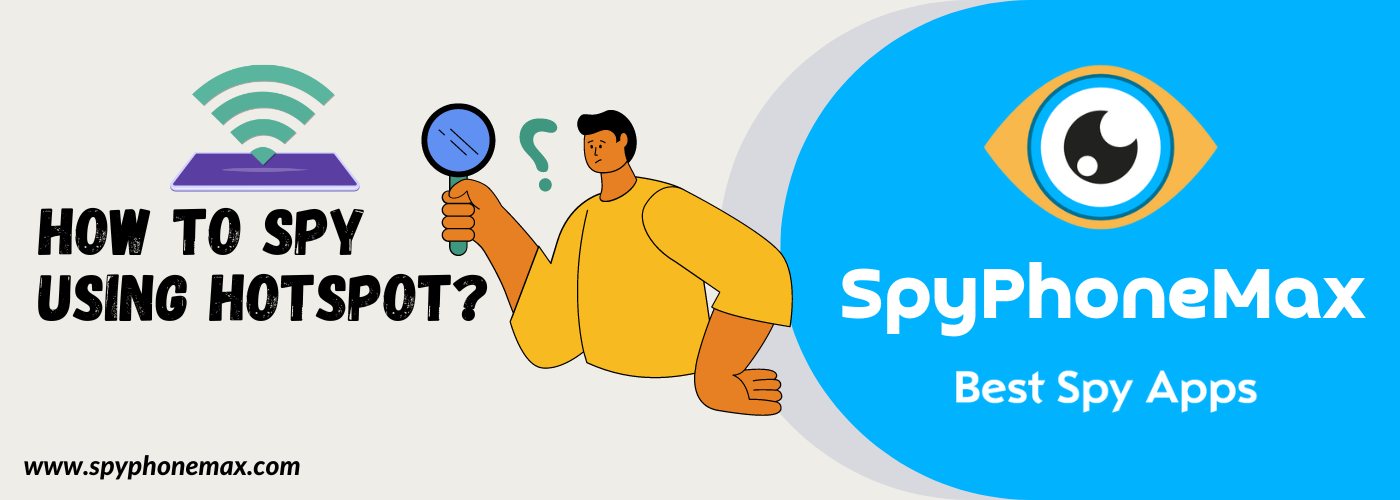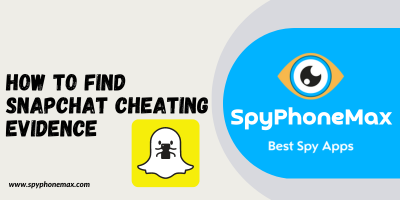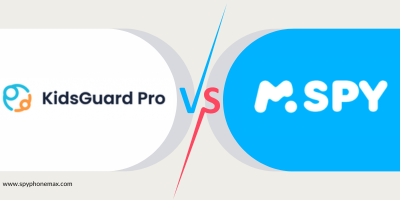The advent of digitalization has brought along a myriad of possibilities and vulnerabilities. Hotspots – digital oases in the desert of connectivity – are one such double-edged sword. They’ve made our lives incredibly convenient, but there is a darker side to it, a potential use for espionage. In this article, we will navigate through the intriguing labyrinth of Wi-Fi espionage and how hotspots can be utilized for the same.
Note: This information is solely for educational purposes, promoting awareness about digital safety, and does not endorse any form of unethical or illegal activities. 🔒
Understanding the Mechanics of a Hotspot 💻
Before we dive into the nitty-gritty of hotspot espionage, let’s comprehend what a Hotspot is. In simple terms, a hotspot is a physical location where you can obtain internet access, typically using Wi-Fi, via a wireless local area network (WLAN) with a router connected to an internet service provider.
Can A Hotspot Be Monitored? Unveiling The Truth 👀
If you’ve ever found yourself pondering the question, “Can a hotspot be monitored?“, you are not alone. As we delve deeper into the digital age, questions like these become increasingly relevant and important.
The straightforward answer to this question is – yes, a hotspot can indeed be monitored. While hotspots offer convenience and connectivity, they can also serve as a window for monitoring and tracking digital activities if not used with proper precautions. Here’s how:
- 🌐 By the Internet Service Provider (ISP): Your Internet Service Provider (ISP) has direct access to all the data transmitted over your hotspot. They can track the websites you visit, the times you access them, and the data you send or receive.
- 🔍 Through Packet Sniffing: As discussed earlier, ‘Packet Sniffing’ is a technique used to capture and log network traffic. When you use a hotspot, your data is transmitted in the form of packets. If someone is using a packet sniffer on your network, they can potentially monitor your internet activity.
- 💼 Employer Monitoring: If you are using a hotspot provided by your employer, they could potentially monitor your internet activity. Companies often do this to ensure the appropriate use of corporate resources or to protect their network from potential security threats.
- 👮 Law Enforcement: Under certain circumstances, law enforcement agencies can request your ISP for access to your browsing history.
So, it’s not only possible to monitor a hotspot, but it’s also relatively common in certain situations. Remember, the key to ensuring your privacy is being proactive. Always follow the best practices for safe internet usage, such as using a VPN, securing websites with HTTPS, updating software regularly, and being cautious while using public Wi-Fi.
So, enjoy the benefits of a hotspot, but always remain alert and aware. After all, in this digital era, your privacy is in your hands. 🛡️
How To Spy Using Hotspot? A Closer Look 🕵️♀️
As discussed earlier, it is critical to remember that the information provided here is for educational purposes only. It is illegal and unethical to spy on someone without their consent. However, understanding the methods can help us better protect ourselves.
So, how can someone potentially spy using a hotspot? Let’s delve into the specifics.
- 💻 Creating a Rogue Hotspot: This is one of the most common methods used for spying. An individual sets up a fake hotspot that appears legitimate to unsuspecting users. Once connected to this rogue hotspot, your data can be intercepted or manipulated.
- 🔍 Packet Sniffing: Using a technique called ‘packet sniffing’, an individual can capture and log the traffic passing over a network. Tools such as Wireshark can be used for this purpose.
- 👥 Man in the Middle (MITM) Attacks: In a MITM attack, a malicious actor inserts themselves into a conversation between two parties, impersonates both parties and gains access to the information that the two parties were trying to send to each other. Tools like Ettercap can facilitate MITM attacks.
- 🦠 Malware: If a hotspot owner can trick users into downloading malware (perhaps by mimicking a required update or add-on), they may gain access to more detailed information from the user’s device.
Always remember, knowledge is power. Knowing these methods of spying using a hotspot should serve as a wake-up call to practice better digital hygiene. Always ensure you’re connected to a known and trusted hotspot, use VPNs for secure browsing, and keep your devices updated with the latest software and security patches.
Your safety and privacy are of paramount importance, so be informed, be alert, and take the right precautions when using a hotspot. 🛡️
Is There An Easier Approach Without Technical Knowledge? Introducing Spy Apps 📲
For those who may be wondering if there’s an easier way to monitor hotspot activity without having to dive into complex technical concepts such as packet sniffing or man-in-the-middle attacks, there is an answer: Spy Apps.
These applications are designed to provide a more user-friendly interface for monitoring and controlling various activities, making the task more accessible to those without an in-depth knowledge of technology. However, it’s crucial to understand the ethical implications and legal boundaries that come with their usage.
Note: The usage of spy apps should always abide by legal and ethical guidelines. It’s generally illegal to monitor someone’s digital activity without their consent, except in certain cases, like parental control over minor’s devices or employer control over company-owned devices.
Here are a few popular spy apps:
- mSpy: mSpy is a popular application that allows you to monitor text messages, call logs, and even real-time GPS location. It also provides monitoring features for various social media platforms.
- FlexiSPY: FlexiSPY offers similar features to mSpy, but also allows you to record and listen to live phone calls.
- Hoverwatch: Hoverwatch is another well-known app that provides an array of features for monitoring smartphone activity.
These apps require installation on the target device, after which the data can be accessed remotely through a web-based interface.
However, remember the golden rule – just because you can, doesn’t mean you should. Use these tools responsibly and within legal boundaries, respecting the privacy of others.
Spy apps such as mSpy come loaded with an array of features, providing an extensive scope for monitoring online activity. However, their use should always align with ethical and legal guidelines. Here is a rundown of what such an application could potentially offer:
- 🔐 Private Social Media Chats: Spy apps allow you to read conversations on various social media platforms, even those you may not be aware of. This helps keep a check on any potentially harmful interactions or exposure to inappropriate content.
- 🚫 Manage Online Activity: Control is at your fingertips with features that let you block specific websites or apps on the target device. This is particularly useful for parents looking to ensure a safe digital environment for their children.
- 📩 Access Texts & Emails: If it’s on their phone, it’s accessible to you. You can read their SMS messages, iMessages, emails, and even chats from Google Hangouts, providing a comprehensive view of their communication.
- 📞 Call & Meeting Information: Spy apps also allow you to see who the target device is calling and contacting, which can help you understand their social circle better.
- 📍 Track Location: A key feature is location tracking, providing real-time information about where they are and their travel history. This can offer peace of mind, particularly for parents.
- 📁 Discover Phone Content: With spy apps, you can view pictures, videos, and apps stored on the target device. This helps you keep a check on the type of content being consumed and shared.
- 🔍 Keylogging & Screen Recording: Some apps include built-in keyloggers, allowing you to see everything typed on the device. Paired with screen recording features, it can provide an even clearer picture of their device usage.
- 🖥️ User-Friendly Monitoring Experience: Most spy apps like mSpy are designed with an intuitive and easy-to-use interface. Moreover, they offer comprehensive customer support to help you make the most of their features.
However, while these features may seem enticing for gaining control and insight, it’s critical to remember that these tools should only be used responsibly and ethically. In many jurisdictions, it’s illegal to monitor someone’s digital activities without their knowledge or consent, so always ensure you’re on the right side of the law and ethical guidelines when using these tools. 🚦🔏
Always remember that knowledge about such applications should primarily be used to safeguard your own privacy and ensure the safe and appropriate use of the internet by young ones under your guardianship. 👮♀️🔒
For those interested in a more in-depth understanding of these spy apps, we have conducted comprehensive reviews to help you make an informed decision:
- mSpy: Our complete review of mSpy app provides an exhaustive analysis of its features, usability, and overall effectiveness. This review aims to give you an understanding of what you can expect from this popular spying tool.
- FlexiSPY: Similarly, if you’re looking at FlexiSPY as a potential monitoring solution, check out our detailed FlexiSPY review. This review dives into the unique features FlexiSPY offers, its ease of use, and how it compares with other options in the market.
Reading these reviews will provide you with a comprehensive understanding of these spy apps, allowing you to make an informed decision based on your specific needs and ethical considerations. Remember, the use of spy apps should always be aligned with laws and respect for personal privacy. 📘🔍
How to Safeguard Against Wi-Fi Espionage? 🔐
Forewarned is forearmed. Now that we are aware of the possibilities of hotspot espionage, let’s delve into how we can safeguard our digital selves.
- 🔒 Use VPN: A Virtual Private Network (VPN) creates a private network from a public internet connection. It masks your IP address so your online actions are virtually untraceable.
- 🔐 HTTPS: Always ensure the websites you visit are secured with HTTPS, as this means they encrypt your communication with the website.
- 🔄 Updated Software: Ensure your device’s software is up-to-date. Manufacturers often release patches that fix known vulnerabilities.
- 📶 Public Wi-Fi Etiquette: Be cautious while using public Wi-Fi. Avoid conducting sensitive transactions, or better yet, stick to your mobile data.
In conclusion, in this digital era, being aware is your best line of defense. Use the knowledge of the potential risks and threats to ensure that you are secure while enjoying the convenience of hotspots. After all, it’s better to be safe than sorry, right?
Stay curious, stay safe, and continue to explore this digital world with confidence! 🌐
Frequently Asked Questions (FAQ) ❓
Conclusion 🎯
Understanding how to spy using a hotspot can indeed be a powerful tool, but it’s important to always navigate this space with a high degree of responsibility. While technologies like Wireshark and spy apps like mSpy and FlexiSPY provide an insight into the world of digital communication, it is crucial to remember that these tools must be used ethically and within the legal framework.
The prospect of monitoring hotspots and accessing private data brings with it a host of privacy and legal concerns. Unauthorized spying on a hotspot is generally illegal, and infringing upon the privacy rights of others can lead to severe consequences. Always prioritize the principles of consent, privacy, and respect when using these tools.
For those interested in the more technical side of network monitoring, it’s essential to continually educate oneself and stay updated with the latest software and security practices. Protection measures such as using a VPN, ensuring secure HTTPS connections, keeping software updated, and being cautious while using public Wi-Fi can help maintain your digital safety.
Finally, if you’re keen on diving deeper into the world of spy apps, our comprehensive reviews of mSpy and FlexiSPY can provide a more nuanced understanding of their capabilities. Remember, knowledge is power, and using this power wisely is key. Stay safe, and respect digital boundaries! 🌐🔒




